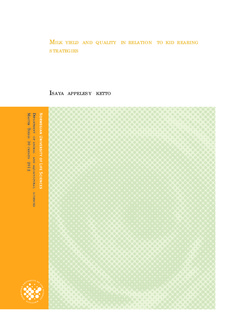| dc.description.abstract | The aim of this study was to evaluate the effect of kid rearing strategies on the milk yield and
quality. Sixty two lactating does were assigned into three kid rearing strategies. In the first
strategy kids were separated from their mothers two days after kidding and raised artificially
by milk replacer (n=20), Strategy two does stayed with the kid during the day and separated at
night/partly suckling (n=23) and in the last strategy kids were allowed to suckle for the whole
day until weaning(n=19). Does were milked twice per day and milk registration was done on
Tuesdays and Wednesdays from week 5 to week 26 except week 10. Milk samples were
registered by mixing the morning and evening milk and analyzed for fat, protein, lactose and
somatic cell count. Weights of the does were measured at two days, five weeks and twelve
weeks after kidding. Eighty four kids of both sexes were grouped according to the rearing
strategies as described earlier. Weight of the kids were measured at birth, five weeks, seven
weeks, ten weeks and fifteen weeks after kidding, these weights were used to calculate the
daily weight gain. Milk protein, lactose and somatic cell count were affected (P<0.05) by the
week of the year while milk yield and milk fat were affected (P<0.05) by the kid rearing
strategy, age of the goat and week of the year. Birth type did not show any significant effect
on the milk yield and milk fat. Mean daily yield during the first 5 weeks of lactation was higher
(P<0.001) in the goats under strategy one (1.21±0.08litres) compared to strategy two
(0.80±0.08litres) and three (0.39±0.09litres) while the milk fat was higher in the goats under
strategy three (4.71±0.23%) and less in goats under strategy two (3.46±0.21%) and one
(4.52±0.19%). Post kidding weights of the goats were only affected by age of the goat
(P<0.001). Daily weight gain of the kids was affected (P<0.001) by rearing strategy and age of
the kids. Kids reared artificially in strategy one gained more weight (0.18±0.01kg/day) the
same as the kids under strategy two (0.18±0.01kg/day) compared to kids in strategy three
(0.12±0.01kg/day). Artificial rearing seems to be practical if the cost of labor and the price of
milk replacer are low compared to the price of milk. | no_NO |
